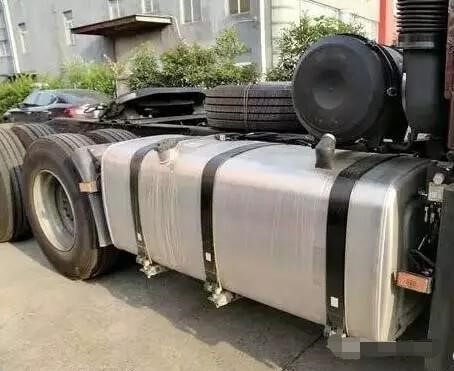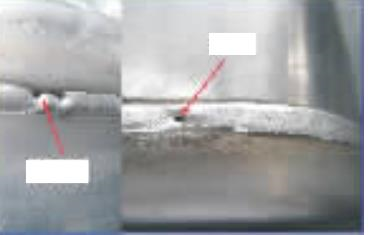I. Truck Oil Tanks: Categorization and Advantages
The truck tank stands as the repository for fuel storage in trucks. Beyond mere storage, these tanks function in heat dissipation, bubble separation within the oil, and filtering out impurities. Embedded within these tanks are several components, such as coolers, heaters, air filters, and level indicators. Tanks are classified by material—iron tanks, composite material tanks (plastic tanks), and aluminum tanks.
Iron tanks boast high strength and cost-efficiency. However, their Achilles' heel lies in poor corrosion resistance, leading to rust contamination of fuel, potentially damaging costly fuel injectors, and rendering them obsolete. Hence, iron tanks are gradually phased out of the market.
Composite material tanks, or plastic tanks, excel in cleanliness, ensuring no fuel contamination. However, their adaptability to environmental variations remains limited, predominantly used in specific light trucks.
In contrast, aluminum alloy tanks triumph over iron tanks due to superior corrosion resistance, ideal for high-pressure common rail engines demanding pristine fuel quality. Furthermore, in adherence to national regulations on vehicle load limits, several automotive enterprises, while ensuring chassis strength and safety, progressively pivot toward lightweight solutions. Compared to iron, aluminum alloy weighs less, prompting the integration of more aluminum alloy components in vehicle configurations.

P1 Aluminum Alloy Oil Tank
II. Challenges in Aluminum Alloy Oil Tank Welding
The aluminum alloy tank takes on a cuboid structure, comprising a main body and two square end covers. With dimensions of 1100 mm × 700 mm × 700 mm and a rated capacity of 500L, the tank possesses a material thickness of 2.5 mm, constructed from 5052 aluminum-magnesium alloy sheets. The cuboid is initially shaped via roll forming, followed by butt welding to create seams. The tank's end covers employ a roll shrinkage process, aligned and inserted into the body, forming a circular lap joint for welding. Employing the MIG dual-pulse technology with dedicated machinery for welding the tank's square end covers, numerous issues arise, including pores and welding leaks (refer to Figure 2). The first-pass qualification rate for the tank's end covers stands at a mere 75%, necessitating extensive argon arc welding afterward. There exists a high risk of secondary leakage due to poor weld seam formation.

P2 On-site Welding Problems
III. Features and Advantages of Megmeet's Dex PM3000 Welding Machine
Thorough production tracking and on-site experimentation revealed that the primary factors influencing welding quality were the welding torch angle on the automatic welding machine and the inadequacy of the strong-weak pulse parameters. Welding defects were noticeable when the torch angle was less than 30°. Issues such as seam penetration or excessive seam height occurred due to inappropriate strong-weak pulse ratios and duty cycles.
To address these concerns, adjusting the welding torch angle and advocating for the use of Megmeet's Dex PM3000 Series Full-digital Intelligent MIG/MAG Welders became the proposed solution, leveraging dual-pulse aluminum welding technology. The Dex PM3000 stands as an intelligent, fully digital high-frequency inverter welding machine, enabling direct current pulse welding across positions for carbon steel, stainless steel, and aluminum alloys. Here are the notable advantages of this welding machine in resolving client issues:
1)Novel Control Scheme: Offers gentle arc initiation, stable welding, concentrated arc energy, deep fusion, consistent formation, and minimal spatter.
2)Strong-Weak Pulse Current Intensity: Ranges up to 90%, allowing on-site adjustments to achieve visually appealing, clear, fish-scale patterns.
3)Integrated Aluminum Welding Expert Systems: Stores various aluminum welding systems and exposes pulse welding parameters for fine-tuning based on on-site conditions, ensuring superior welding outcomes.

P3 Aluminmum Oil Tank
IV. Comparative Analysis of Aluminum Alloy Tank Welding Effects
Through process and equipment enhancements, significant improvements were achieved in the quality and production efficiency of welding aluminum alloy tanks. The prevalent issues of porosity and welding leaks in bulk production were resolved, elevating first-pass welding qualification rates from above 75% to over 98%. The production efficiency saw a remarkable surge, enabling one operator to manage two automatic welding machines, which previously required two welding personnel.
V. Application of Megmeet Dex PM3000 Welder

P4 Dex PM3000 Welder On-site Application







